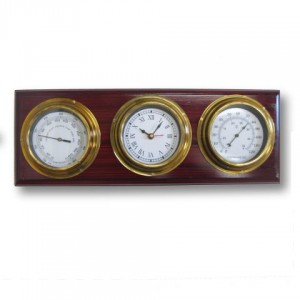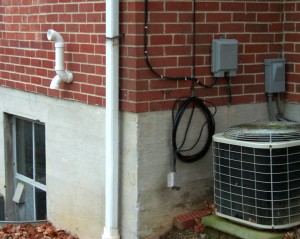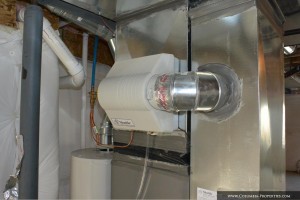We’re taking a break from computers and hi-tech for a couple of posts, mainly because it’s getting colder here in Canada. Central heating simply doesn’t exist in many parts of the world but in parts of North America it’s the only way to survive the winter blasts. Even if you don’t have to heat your house or apartment, stick around and learn about it anyway, just in case you move up here.
Note: We’re concentrating on combustion heating here, in other words fire and flame. The fuel could be oil or natural gas or wood. These aren’t the only alternatives, of course. Electricity, heat pumps, solar are all available but most of Canada uses oil or gas.
Let’s start by breaking things down to basics. There are three things that make up an efficient heating system: the type of furnace in the house, the humidity of the air and how successful the system is in moving the hot/cold air around. You can’t do much about the type of furnace you have in the house so unless you’re going to change that system, the only things you can adjust are the humidity and air movement. Let’s start with humidity.
Humid in winter/dry in summer:
What’s the difference between a hot day in Arizona or New Mexico and a hot day in Toronto? Most of the hot days in Toronto are also humid. You’re heard the saying, “It’s a dry heat”, right? That’s our way of describing hot dry air as opposed to hot humid air. This all boils down to evaporation. When the air is dry, your skin gets rid of its excess moisture rapidly. Sometimes the moisture isn’t even excess, the air seems to be sucking water from your skin if it’s really dry. This evaporation keeps you cool in the summer just as it does in the winter inside your house if you don’t have enough moisture in the air.
On the other hand, when the air is full of its own water, it can’t absorb yours. You get hotter from the lack of evaporation of the moisture on your skin. Step out of a swimming pool on a hot, humid day and the air feels warm. You don’t go running for a towel to dry off. On a dry day, even if it’s relatively hot, the moisture on your skin disappears rapidly, cooling you down quickly.
In a heated house, these differences between humid air and dry air come into play too. If the air in your house is humid in the winter, you feel warmer. That means you can turn down the thermostat and save money on fuel. Obviously if the air in your house is dry, it doesn’t matter how hot it is, you still feel cool. Therefore your first objective is to make sure there is enough water in the air, otherwise known as humidity, so you feel warm at a lower temperature.
Step One: Buy a hygrometer
Wazzat? Well, hygrometer tells you how much moisture is in the air in your house. You’re not going to fix the humidity if you don’t know what it is, right? As a matter of fact, you may already have a hygrometer. Frequently looking like a ship’s wheel, hygrometers are usually paired with a barometer. Here’s a photo of what we’re talking about:

As a general rule, the humidity in your home will be higher in the summer. The more you let the outside air into your home in the summer, the wetter it will be. In the winter, depending on your heating system, the air will be significantly dryer. How wet or dry should it be? Figure around 50% or just a bit less. Bad things happen when the air gets too wet and your skin dries out when it gets too dry. Static electricity is also a problem in dry air.
High Efficiency or Not?
When you break central heating down to its basics, there are really only two types of fuel-based systems. One uses the air inside the house it is heating for its combustion. The other uses outside air for combustion. The former is often termed regular or mid efficiency. The latter systems are almost always high efficiency. What difference does this make to the moisture in the air? Well, if you’re using the same air that you’re trying to heat for combustion, the air is expanding and drying out. The moisture that was in one cubic metre of air is now in three, four or five cubic metres, right? There is less moisture in the same quantity of air.
Here’s a good way to tell if you have a high efficiency furnace. Take a look at this photo. One of these pipes takes air in, the other shoots out the air after the furnace is finished with it. The air coming out is just warm, not hot, because the furnace has taken most of the heat from the exhaust and warmed your house with it:

In a home with a high efficiency furnace, the air required for combustion is taken from outside. The air in the home keeps its humidity. Add the moisture from cooking and showers, etc. and the air gets more than enough water vapor in it to offset the air coming in when someone opens the door or through leaks in the walls or windows. Remember that the outside air expands when it enters your warm home. As we learned above, air that expands effectively loses it’s moisture.
Fireplaces
Just a note here to say that while fireplaces are wonderful, they play a part in drying the air in your house. Sure, there are some high efficiency natural gas fireplaces but most of us like a wood-burning, cozy one. Better to use them sparingly in really cold weather. There are two reasons for this. First, the drying of the air. Second, a fireplace sucks air for combustion and shoots it up the chimney. If that air has already been heated by your central furnace, you’re wasting money. It’s literally going up in smoke. Best to save the fireplace for moderately cool days or, better yet, turn the furnace off when you’re burning wood.
Add a humidifier
Once you find out what the water vapor level in your air is, you’ll know if you need a humidifier or not. With a high efficiency furnace, there is rarely a need for extra moisture. With anything else, a humidifier adds sufficient moisture to the air to make you more comfortable. Just don’t go nuts and add a ton of moisture or you’ll run into mold and mildew problems. Unless you’re very handy, it’s a good idea to call a contractor to add a central humidifier to your furnace. On the other hand, you may already have one. Humidifiers often get plugged with calcium and stop working. Most homes should have one but yours may need repair or replacement. Vinegar will unplug anything that has calcium deposits, by the way. Try that first. Here’s one type of humidifier:

That’s it for today. Next time we’ll talk about getting that hot air to where it’s needed…efficiently.
Comments and questions are welcome but Likes on our Facebook page get immediate attention. Here’s the link: Computers Made Simple on Facebook
Thanks for reading!
